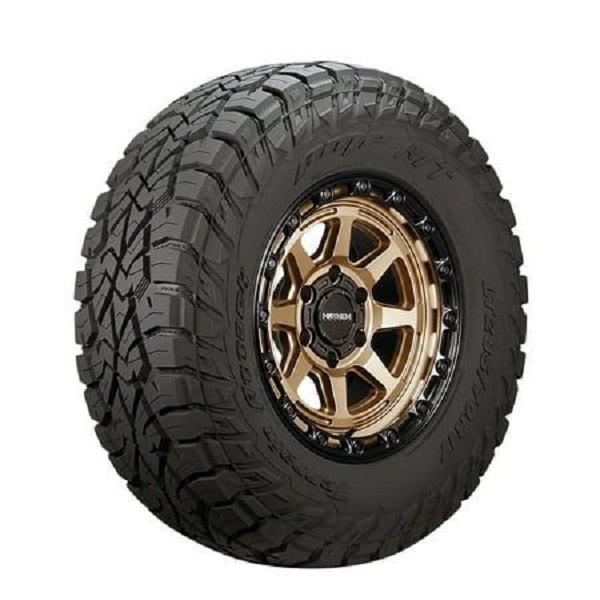Introduction
When you get behind the wheel of your vehicle, ensuring its safe and efficient operation encompasses a wide range of responsibilities. Among these, one critical aspect often overlooked is the condition of the tires. Why should you check the condition of the tires? While many car owners routinely check the oil level, battery life, and windshield wipers, they may neglect the very components that connect their vehicle to the road: the tires. So, why should you check the condition of the tires as you check of the car? This article explores the multifaceted importance of tire maintenance, including safety, performance, fuel efficiency, and more.

Why Should You Check the Condition of the Tires? Understanding Tire Anatomy
Before delving into the significance of checking tire conditions, it’s essential to grasp what comprises a tire.
The Basic Components of a Tire
- Tread: The outer layer that makes direct contact with the road, the tread is designed for grip and traction. Its depth and pattern directly affect performance in wet or dry conditions.
- Sidewall: The walls of the tire provide structural integrity and flexibility, absorbing shocks from the road.
- Bead: The area that connects the tire to the wheel, ensuring it remains securely mounted.
- Ply: Layers of fabric or steel that give strength and flexibility to the tire.
Understanding these components allows vehicle owners to appreciate why monitoring their condition is crucial.
The Safety Aspect of Tire Maintenance
One of the foremost reasons to check the tires regularly is safety. Tires are the sole point of contact between your vehicle and the road, making their condition a primary concern.
Tread Depth and Traction
The depth of the tire tread significantly influences your vehicle’s traction. Worn tires can lead to an increased risk of hydroplaning during wet conditions, reducing your control over the vehicle. As a general rule of thumb, if the tread wear indicator, often a small bump in the tire’s groove, becomes flush with the tread, it’s time to replace the tire.
Proper Inflation
Maintaining correct tire pressure is essential not just for handling but for safety. Under-inflated tires can overheat and lead to blowouts, particularly in high-temperature conditions. Conversely, over-inflated tires may also burst or provide less traction. Regular checks can prevent potentially dangerous situations.
Alignment and Wear Patterns
Checking tires can reveal alignment issues. Irregular wear patterns might indicate misalignment, requiring immediate attention to prevent further damage and ensure safe vehicle handling.
Performance and Control
The performance of a vehicle is markedly influenced by the condition of its tires.
Enhanced Handling and Responsiveness
Tires in good condition provide better handling and responsiveness. A well-maintained tire responds effectively to steering inputs, crucial in avoiding obstacles or making emergency maneuvers. Conversely, worn tires, particularly those with uneven wear, can lead to unpredictable handling, jeopardizing swift corrective actions in critical situations.
Braking Distance
Tires impact the distance it takes to come to a complete stop. Studies have shown that worn tires can increase stopping distances significantly, potentially leading to accidents. Ensuring adequate tread depth directly correlates with improved braking performance and safety.
Fuel Efficiency and Performance
Fuel efficiency is another vital area affected by tire condition. Properly inflated and well-maintained tires reduce rolling resistance, which enhances fuel efficiency. In contrast, tires in poor condition can increase fuel consumption by as much as 3-4%. So, regular checks can also lead to savings at the pump.
The Economic Angle of Tire Maintenance
Failing to check tire conditions can lead to severe economic implications.
Prevention of Costly Repairs
Neglecting tire maintenance can lead to more extensive vehicle issues. For example, misalignment due to tire conditions can result in premature wear on suspension components and brakes, leading to costly repairs down the line. By simply checking the condition of tires, you can save significant amounts in maintenance costs.
Extended Tire Lifespan
Regularly checking the tires can help identify issues early on, allowing for corrective actions such as rotations and alignments. This attention to maintenance can extend the lifespan of your tires, yielding savings on frequent replacements. A well-cared-for tire generally lasts longer and performs better.
Environmental Impact
The tires on your vehicle also have environmental implications that can’t be overlooked.
Recycling and Waste Management
When tires are discarded, they can contribute to landfill waste if not disposed of correctly. Proper maintenance can increase the interval between replacements, thereby minimizing tire waste. When tires reach the end of their life cycle, consider recycling programs aimed at reducing environmental footprints.
Fuel Consumption and Emissions
Good tire condition not only conserves fuel but also reduces carbon emissions. The less fuel consumed by your vehicle, the lower the environmental impact. By ensuring your tires are in optimal condition, you play a part in promoting a more environmentally-friendly driving culture.
The Seasonal Considerations
Seasonal changes can significantly impact tire condition and performance.
Different Tires for Different Weather
Using the appropriate tires for each season can enhance driving safety and performance. All-season or performance tires may be suitable for most conditions, but investing in winter or summer tires can provide better traction and handling specific to the temperature ranges and weather patterns.
Regular Seasonal Checks
With each season change, it’s wise to check tire condition as part of your vehicle preparation routine. For instance, tire pressure often drops in colder temperatures, and seeing how your tread holds up during wet or wintery conditions can make a notable difference in handling and safety.
Comprehensive Tire Checklist
When it comes to maintaining the tires on your vehicle, developing a thorough checklist can streamline the process. Here, we’ll break down the essential components of a complete tire check.
Visual Inspection
1. Check for Uneven Wear:
- Start with a visual inspection of each tire. Look for signs of uneven wear patterns. This could indicate alignment issues or improper inflation. Common patterns include:
- Cup Wear: Notches or cups in the tread, indicating suspension problems.
- Edge Wear: A sign of under-inflation.
- Center Wear: Typically occurs with over-inflated tires.
2. Inspect for Damage:
- Scan the sidewalls for cracks, bulges, or punctures. Any visible damage warrants immediate attention as it can lead to tire failure.
3. Tread Depth:
- Use the penny test: Insert a penny with Lincoln’s head down into the tread grooves. If you can see the top of Lincoln’s head, your tread is too worn, and it’s time for new tires. Alternatively, some tires have built-in tread wear indicators that you can check.
Tire Pressure Monitoring
1. Regular Pressure Checks:
- Utilize a quality tire gauge to check the pressure at least once a month, including before long trips. Remember to check during the morning when the tires are cold for an accurate reading.
2. Understanding Inflation Guidelines:
- Refer to your vehicle’s owner manual or the sticker located inside the driver’s door jamb for recommended tire pressures. Maintain these guidelines for optimal performance and safety.
Seasonal Preparation
1. Winterizing Your Tires:
- When winter approaches, consider switching to winter tires designed for lower temperatures and snowy conditions. They offer better traction and are made of compounds that remain flexible in the cold.
2. Summer and All-Season Tire Assessment:
- As temperatures rise, ensure your summer and all-season tires are suitable for the conditions. Check the tread depth, and avoid using summer tires in icy temperatures as it can lead to decreased traction.
Tire Rotation and Alignment
1. Routine Tire Rotation:
- To promote even tire wear, rotate your tires every 5,000 to 7,500 miles, or as recommended in your vehicle’s manual. This helps extend the lifespan of all four tires.

2. Alignment Check:
- If your vehicle pulls to one side or if you notice uneven tire wear, it might be time for a wheel alignment. Experts recommend alignment checks every 6,000 miles or whenever you have new tires installed.



